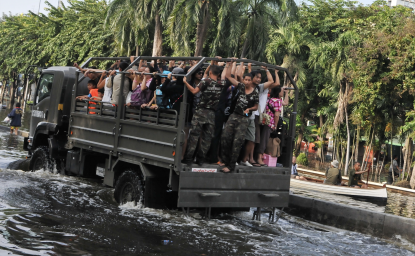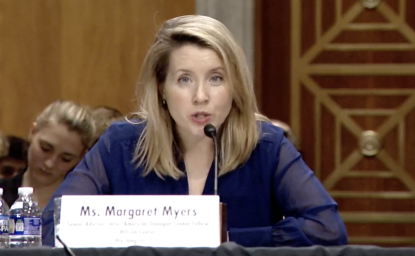Dau Voi, Duoi Chuot (Head of an Elephant, Tail of a Mouse)


Merle Pribbenow, "Dau Voi, Duoi Chuot (Head of an Elephant, Tail of a Mouse)," review of Lịch sử Nam bộ kháng chiến (History of the Southern Resistance), edited by Hội Đồng Chỉ Đạo Biên Soạn Lịch Sử Nam Bộ Kháng Chiến, Cold War International History Project, October 2014.
The four-volume set titled Lịch sử Nam bộ kháng chiến is at once a significant achievement but also a significant disappointment. The four volumes consist of one volume that provides the history of the war against the French (1945-1954) in Nam Bộ, or what the French called (and which I will call in this paper) Cochin China, or the southern half of the former state of South Vietnam; a second volume providing the history of the war against the U.S. and the South Vietnamese state in the same area; a detailed chronology of events covering the entire period 1945-1975; and a volume of “main themes” or “main issues” with chapters on such subjects as the involvement of various social classes in the “struggle,” women, finance and economy, the press, religions, and ethnic minority groups, among others. The shortest of these volumes is 950 pages long, while the entire set has a total of more than 4,800 pages, so it was simply impossible to review the entire set in the time available. This reviewer focused his attention on the war against the Americans and only did a very cursory scan of the other volumes.
I will begin with the positive points. The set of volumes is certainly a very comprehensive compilation form many different sources of the entire history of the communist resistance struggle in the area of Cochin China (the area from the southern end of the Central Highlands south through the Saigon area and the Mekong Delta to the extreme southern tip of Vietnam).
Perhaps the most interesting sections are chapter 2 and the first portion of chapter 3 of Volume II, which contain a great deal of interesting details about the conflicts between the Communist Party leadership in Hanoi and the Party organizations and individual Party members operating in South Vietnam over the Hanoi leadership’s orders that the Party in the South restrict itself to peaceful political struggle and Hanoi’s strict prohibition of the use of “armed struggle” and the formation of armed units.[1] Some sections of chapter 7, the chapter about the 1968 Tet Offensive, contain interesting and useful material about shortcomings and problems, particularly during and after the second and third waves of the offensive in May and August 1968, and there is a valuable copy of a document, a detailed breakdown of 1968 casualties from a classified People’s Army of Vietnam General Staff report internal report dated 14 February 1968.[2] There is also a nice discussion at the beginning of chapter 10 on the period 1973-74, describing the confusion and dissension among the various communist headquarters organizations in South Vietnam about strategy and tactics during the first few months following the signing of the Paris Peace Agreement on 28 January 1973.[3] Finally, appendix 3 of Volume II is a very interesting and valuable internal document dated 1960 critiquing the mistakes the Party leadership in the South made during the 1954-1959 period.[4]
On the negative side, there are a host of omissions and deficiencies in this volume as well. The two most basic, I feel, are that, in spite of its title and stated purpose, this collection fails to provide a real “Southern” voice and perspective, and virtually everything in this collection is taken from secondary sources (open-sources, published histories, memoirs, etc.) rather than primary source materials.
On the first issue, one would have thought that a collection focused on the role of the South in the Vietnamese revolution would have described and emphasized the roles and actions of Southern leaders such as Vo Van Kiet, Pham Van Xo, Tran Van Tra, Tran Bach Dang, Nguyen Huu Tho, Tran Buu Kiem, Huynh Tan Phat, Nguyen Thi Binh, and a host of others. However, the names of these individuals are seldom mentioned, and usually even then only in passing. One could read the entire 4,800 pages of this collection and still be left with no answers to long-standing historical questions about the thinking, the actions, and the importance of these figures in the overall “resistance effort.” I am sure there are political reasons for this, but this failure detracts enormously from the overall value of this collection.
There is virtually no discussion of any substance of the roles, responsibilities, and importance (or lack of same) of the National Liberation Front for South Vietnam (NLF), the Alliance of National, Democratic, and Peace Forces, and the Provisional Revolutionary Government of the Republic of Vietnam (PRG). The section on the formation of the NLF covers slightly more than eleven pages (out of a volume that is more than 1,600 pages long), the material in it is all taken from secondary sources (including the 1960 volume of Văn kiện Đảng toàn tập, or “Collected Party Documents”), and there is no real description of the relationship between the Communist Party and the NLF.[5] The only mention of the role of the NLF is where it is stated that “the revolutionary movement needed a overt organization to assemble the support of a broad range of patriotic forces and individuals under one overt flag…,” and “at the same time, the National Liberation Front also had a special role, which was serving as the administrator of liberated zones over which the people had just seized control….”[6] This certainly implies what we (or at least most of us) have always known, which is that the NLF was nothing but a front organization for the Vietnamese Communist Party with no real power or substance, but that is all it is—an implication with no substance.
The section on the formation of the PRG is similarly brief, just four and a half pages, and equally as uninformative.[7] There is absolutely no mention of the role of the NLF or the PRG in peace feelers/peace talks, and indeed there is very little mention of the peace talks at all. The entire section on the 1972-1973 negotiations and the signing of the Paris Peace Agreement in January 1973 is less than eleven pages long, of which four pages are devoted to the December 1972 Christmas bombing of Hanoi, and there is no mention of what role, if any, the PRG/NLF played in these negotiations, other than to sign them.[8]
Similarly, there is absolutely no mention of the role of either the PRG or the NLF in the decisive 1975 period, no mention of what contribution (if any) they made to the decisions that resulted in the Spring 1975 General Offensive and the capture of Saigon, or in the flurry of diplomatic activities in April 1975 as the South Vietnamese and the U.S. searched for some kind of negotiated deal to end the fighting. For example, we know from the memoir of the North Vietnamese Ambassador in Paris, Vo Van Sung, that there was a disagreement between him and his PRG counterpart in Paris, Pham Van Ba, over the issue of whether or not to accept the new government of General Duong Van Minh in late April 1975.[9] However, this disagreement is not mentioned anywhere.
The other serious deficiency that this collection of volumes suffers from is its almost complete reliance on secondary sources. One would have thought that a history devoted to the role of the South in the Vietnamese revolution would have made extensive use of first-person interviews of key figures in the Southern resistance, a history sponsored by Vo Van Kiet and including a host of Southern luminaries in its governing board, would have been able to arrange such first-person contributions to provide insights to help illuminate the host of questions that still exist about the Southern role in the revolution. In addition, the authors and editors who compiled this book clearly had access to primary source materials, as evidenced by appendix 2 of Volume II and by the classified General Staff document on 1968 casualties, but there are virtually no other such references to the use of primary source materials in the text.[10]
In summary, then, in this reviewer’s opinion this is a useful overall historical collection for general readers in Vietnam, but it does not provide a true Southern “voice” and it has only limited value for historians and academic specialists in the Vietnam War.
Click Here to Return to the Symposium on the History of Vietnam's Southern Resistance
[1] Hội Đồng Chỉ Đạo Biên Soạn Lịch Sử Nam Bộ Kháng Chiến, ed., Lịch sử Nam bộ kháng chiến, Tap 2: 1954-1975 (History of the Southern Resistance, Vol. 2, 1954-1975) (Hà Nội: Nhà xuất bản Chính trị quốc gia, 2010), 75-154.
[2] Lịch sử Nam bộ kháng chiến, Tap 2, 673.
[3] Lịch sử Nam bộ kháng chiến, Tap 2, 821-827.
[4] Lịch sử Nam bộ kháng chiến, Tap 2, 1148-1160.
[5] Lịch sử Nam bộ kháng chiến, Tap 2, 218-230.
[6] Lịch sử Nam bộ kháng chiến, Tap 2, 229.
[7] Lịch sử Nam bộ kháng chiến, Tap 2, 716-720.
[8] Lịch sử Nam bộ kháng chiến, Tap 2, 797-809.
[9] Vo Van Sung, Chiến dịch Hồ Chí Minh giữa lòng Paris (The Ho Chi Minh Campaign in Paris) (Hanoi: Nhà Xuất Bản Quân Đội nhân dân, 2005), 108-109.
[10] Lịch sử Nam bộ kháng chiến, Tap 2, 673, 1111-1147.
Author

Cold War International History Project
The Cold War International History Project supports the full and prompt release of historical materials by governments on all sides of the Cold War. Read more


History and Public Policy Program
A leader in making key foreign policy records accessible and fostering informed scholarship, analysis, and discussion on international affairs, past and present. Read more

Explore More
Browse Insights & Analysis
Symposium on the History of Vietnam's Southern Resistance

Myanmar’s Junta and the 2026 Elections: A Fig Leaf for Legitimacy?

